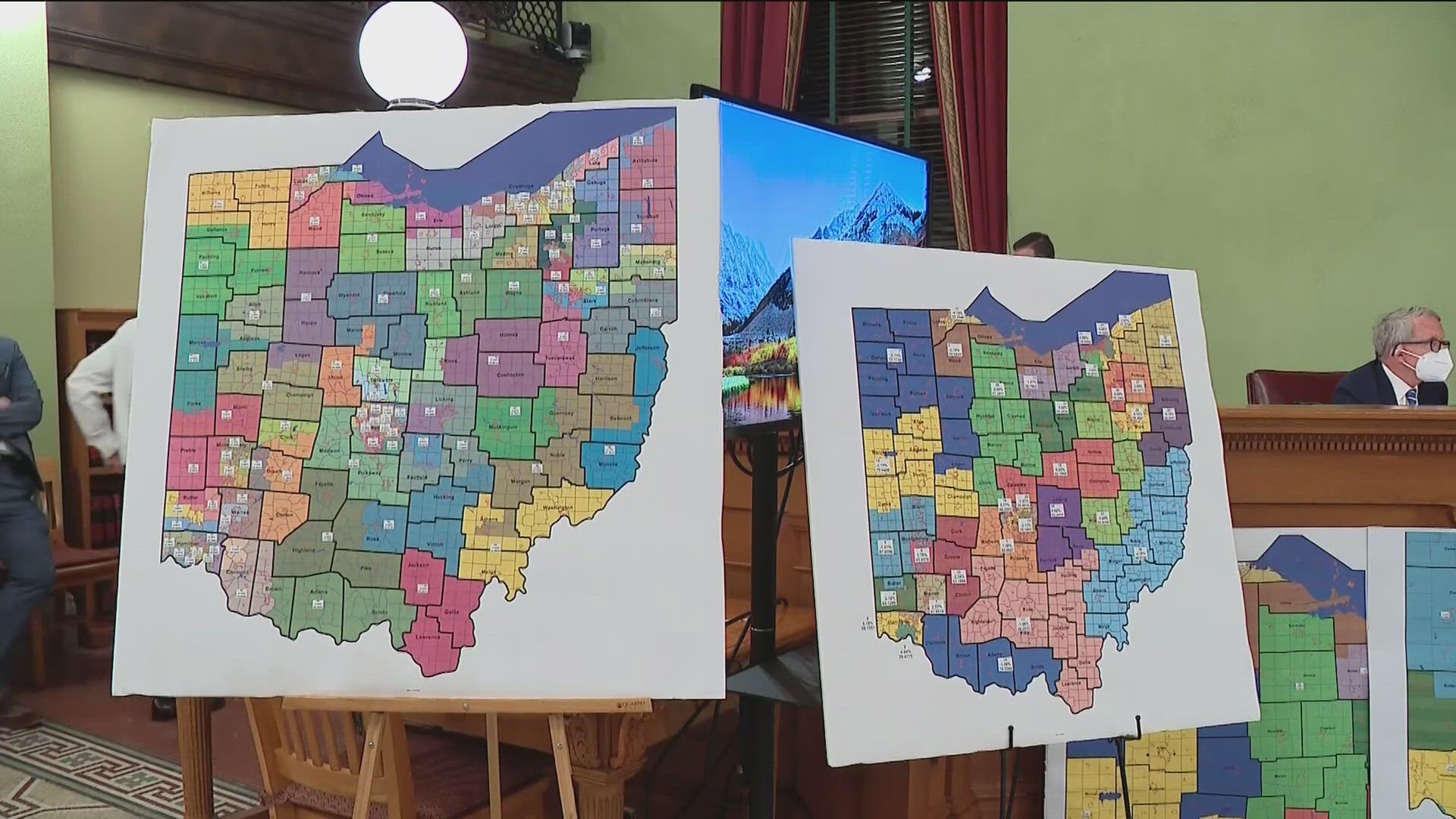OHIO, USA —
An issue on the Ohio ballot could change how district maps are drawn in the state if passed in November.
Issue 1 is not the first time there has been an anti-gerrymandering initiative on the ballot, though. In 2015 and 2018, redistricting amendments were passed, but this year's is taking a new approach, focusing on who is drawing the maps.
Over 70% of Ohio voters voted yes to anti-gerrymandering reforms in previous elections.
RELATED: Ohio Supreme Court clears ballot language saying anti-gerrymandering measure calls for the opposite
"The issue that we have in our present system is that politicians draw the maps," said Chris Davey, spokesperson for the Yes on One Campaign. "When politicians draw the maps, they gerrymander to protect their seats."
Davey said gerrymandering is something that happens regardless of party affiliation.
The seven-member Ohio Redistricting Commission draws state legislative maps, while the General Assembly draws congressional districts.
"The Supreme Court ruled seven times that the maps that were drawn by the politician redistricting commission were unconstitutionally gerrymandered," Davey said.
Issue One proposes a 15-member commission of citizens draws the districts. The commission would be comprised of five Republicans, five Democrats and five independents.
The commissioners would be selected by four retired judges.
"Citizens will be disqualified from participating if they are politicians, lobbyists, party officials," Davey said. "Anyone who is involved in the political-industrial complex will be prohibited from serving."
If passed, Ohio would not be the first state to have a group of citizens draw the maps. California, Arizona and Michigan all have citizens draw maps.
Michigan has a 13-member board that has completed remedial maps, which should go into effect in January. The commission has faced several lawsuits and been sent to redraw maps several times.
"When you think about civic class, you hear the ideal that government is 'for the people, by the people,' and this is really the purest form of civic class I've ever seen, where really government is for the people, by the people and for voters, not politicians," said Edward Woods III, executive director of the Michigan Independent Citizens Redistricting Commission.
Woods said although Michigan may not have been perfect, he believes the state has fairer maps than in previous elections because of the ballot proposal.
Mark Weaver, spokesperson for the vote no on Issue One campaign, said Ohio should not follow in Michigan's footsteps and should continue with the current anti-gerrymandering reforms in the state constitution.
"We should allow them to work," Weaver said. "They're relatively new but issue one would strip out the anti-gerrymandering provisions that Ohio voters put in and force gerrymandering into the state constitution."
The language was approved on Wednesday by the Ohio Ballot Board in a 3-2 vote.
If Issue 1 is approved, the maps would be drawn for and used for the 2026 legislative elections.

